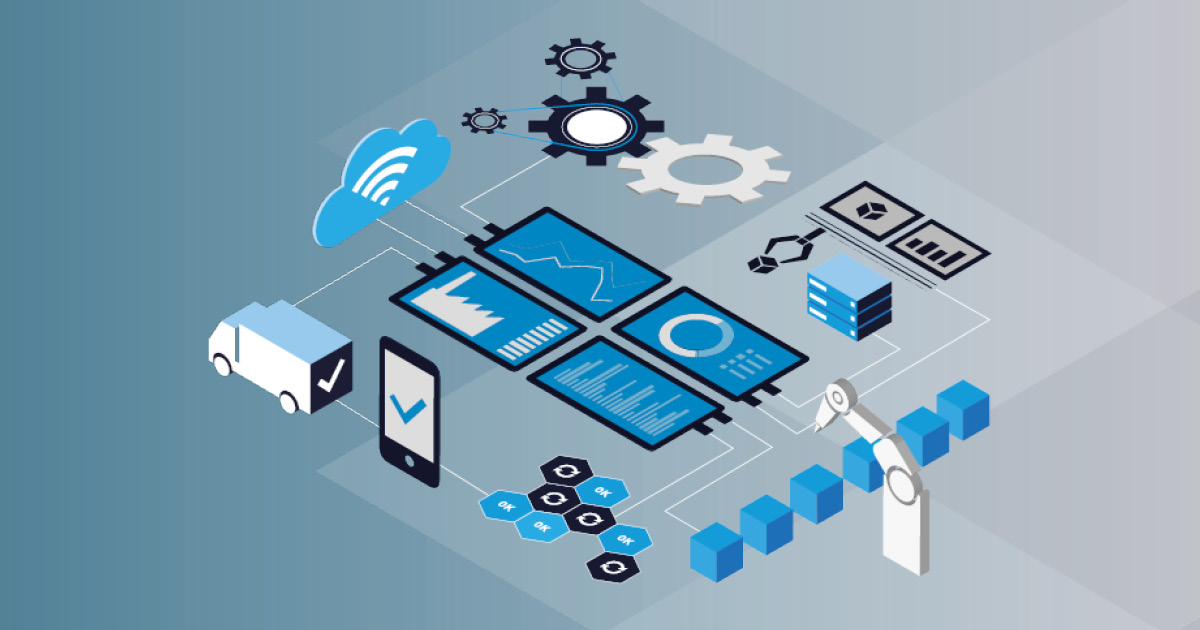In an industrial environment, several components of industrial automation are connected, and these components need to communicate with one another. Historically, this communication was done using Fieldbus, and the components were connected using serial-based communications. Data transfer was done through protocols like Modbus, PROFIBUS, CAN bus, and others.
![]() In more recent times, digitization, convergence of IT and OT, and the Industrial Internet of Things have placed more of a demand on industrial environments. Data-driven requirements have led to more integration between the factory floor and IT systems. The need for high performance on the network communication layer has also been a strong driver.
In more recent times, digitization, convergence of IT and OT, and the Industrial Internet of Things have placed more of a demand on industrial environments. Data-driven requirements have led to more integration between the factory floor and IT systems. The need for high performance on the network communication layer has also been a strong driver.
The concept of the “Industrial Ethernet” has arisen over the past decade to meet these needs of a new industrial world. In fact, a study in 2019 indicated that Industrial Ethernet had eclipsed Fieldbus for the first time in newly-installed solutions and a follow-up report in 2020 indicated the trend is continuing.
Adapting the Ethernet for industrial purposes
Ethernet has, of course, formed the backbone of IT networks for many decades. Because of its speed and flexibility, traditional Ethernet standards for data communication are being applied to other areas and sectors – and this includes industrial IT. But the Ethernet concept had to be adapted to fit the industrial context.
One way the concept was adapted was through the development of new protocols for data communication – most notably, EtherNet/IP, PROFINET, EtherCAT, POWERLINK, or Modbus TCP. The other adaptation – and the one that we will focus on specifically in this article – is through specialized hardware created for an industrial environment.
The hardware
Before we discuss how the hardware is specialized for industrial purposes, let's first consider the types of industrial devices:
- Industrial switches
These are similar to switches found in a traditional IT network, but are available in more rugged versions and can communicate using common Industrial Ethernet protocols. They come in managed, lightly-managed, and unmanaged variants. - Industrial routers
Like their IT cousins, industrial routers enable the movement of data across multiple networks. In particular, industrial routers route data between the Industrial Ethernet network and enterprise networks. - Industrial gateways
Industrial gateway devices can be connected to various elements on the factory floor, and are responsible for aggregating data and sending it to various end points. They also convert protocols for communication across systems and enable communication with public cloud services, like AWS, Azure and Google Cloud.
And, of course, because we're talking about Ethernet, the cables and physical connections are also an important part of the hardware conversation.
Rugged and robust
The industrial environment is physically very different to an office environment. Extreme temperatures, excessive humidity, powerful vibrations, high dust levels, the presence of chemical substances, and electromagnetic noise are all common conditions found on a plant or factory floor. Standard IT hardware would not withstand many of these conditions.
 So just how is Industrial Ethernet hardware adapted to meet these physical conditions? Well, that of course depends on the environment and the goals of the installation, but generally the two main hardware components – devices and cabling – are designed to be more robust.
So just how is Industrial Ethernet hardware adapted to meet these physical conditions? Well, that of course depends on the environment and the goals of the installation, but generally the two main hardware components – devices and cabling – are designed to be more robust.
In the case of industrial devices, there are models available that can operate between -40°C and 85°C, have increased vibration and shock resistance, or have high ingress protection ratings.
When it comes to cables, it's obvious that the old friend of the traditional system administrator, the 8P8C connector, would be insufficient in almost all of the harsh conditions often found in factories and plants. Cables for industrial usage are therefore more robust, with higher quality jackets and metal, and include connectors that have extra shielding or that are water resistant.
Other characteristics of industrial devices
Being resistant to extreme conditions is not the only concern for industrial devices. There are other factors that need to be taken into account, and so industrial devices have several other common characteristics:
- Compact design
Because space on a plant of factory floor might be a problem, many Ethernet devices are available in compact options that can be installed in confined areas like small industrial cabinets. - Network redundancy
Many industrial devices support functionality to create network redundancy, where additional instances of network devices and lines of communication are created to prevent down time or lost data. This includes functionality for setting up ring networks or the use of spanning tree protocols, for example. - Security
Security standards that work for IT Ethernet do not necessarily work for OT, and so specialized security functionality is required. Industrial devices commonly offer functionality based on IEC 62443, a set of security standards for industrial environments. - Modularity
Device modularity is another useful characteristic. For example: a modular switch with various line and power modules makes it easier to expand or maintain a network without long periods of downtime.
Bringing the Industrial Ethernet into view
Adopting the Industrial Ethernet brings about its own challenges for engineers and technicians in industrial IT. Legacy devices require serial-to-Ethernet converters, systems must be migrated to new protocols, and additional network complexity are just a few of these challenges. And of course, constantly ensuring these devices are up and performing as they should be is crucial.
![]() The availability and performance of the devices and systems introduced by the Industrial Ethernet can be monitored in various ways. Just like traditional Ethernet devices, industrial devices commonly offer SNMP as a communication option, which can be used to get vital data about the devices' operation.
The availability and performance of the devices and systems introduced by the Industrial Ethernet can be monitored in various ways. Just like traditional Ethernet devices, industrial devices commonly offer SNMP as a communication option, which can be used to get vital data about the devices' operation.
Data required for monitoring is also often available through OPC UA, a widely-adopted standard in industrial IT communications. Additional mechanisms that can be leveraged for monitoring might include APIs, MQTT, and more. Ideally, monitoring of industrial devices should form part of a unified industrial IT monitoring concept.
In the next few weeks, we will be discussing concrete use cases to demonstrate how to monitor devices such as industrial switches, so be sure to subscribe to our blog newsletter so you don't miss that.
Have you adopted elements of the Industrial Ethernet in your environment? Let us know in the comments below.
 Published by
Published by 




.jpg)






